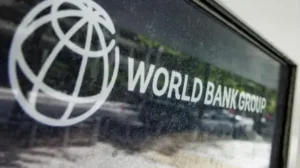 The World Bank has revised India’s economic growth forecast, projecting a 6.5% increase for the fiscal year 2025–26 (FY26), up from the earlier estimate of 6.3%.
The World Bank has revised India’s economic growth forecast, projecting a 6.5% increase for the fiscal year 2025–26 (FY26), up from the earlier estimate of 6.3%.
The revision is driven by stronger domestic consumption, improved agricultural output, and rising rural wages.
For FY27, the World Bank has lowered its growth projection to 6.3%, citing challenges such as higher U.S. tariffs on Indian exports. Overall growth in South Asia is expected to slow to 5.8% in 2026 from 6.6% in 2025 due to trade disruptions and emerging technological uncertainties, including the impact of Artificial Intelligence.
Domestic consumption is supported by a resilient labor market, increased credit availability, and lower inflation, while government reforms like GST simplification have enhanced economic activity. Improved agricultural performance has also contributed to higher rural incomes and spending.
The World Bank noted that India is likely to remain the fastest-growing major economy, but policy measures are needed to address external challenges. Strengthening infrastructure, expanding digital connectivity, and preparing the workforce for technological changes are crucial to sustaining growth.

